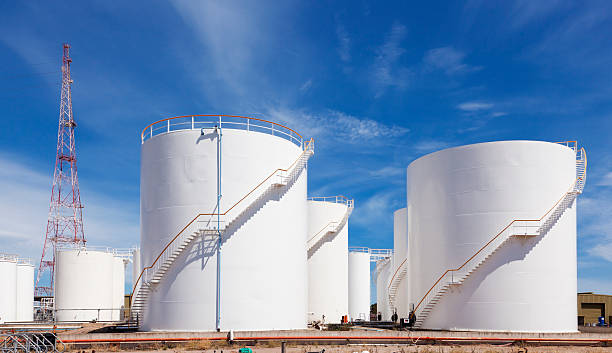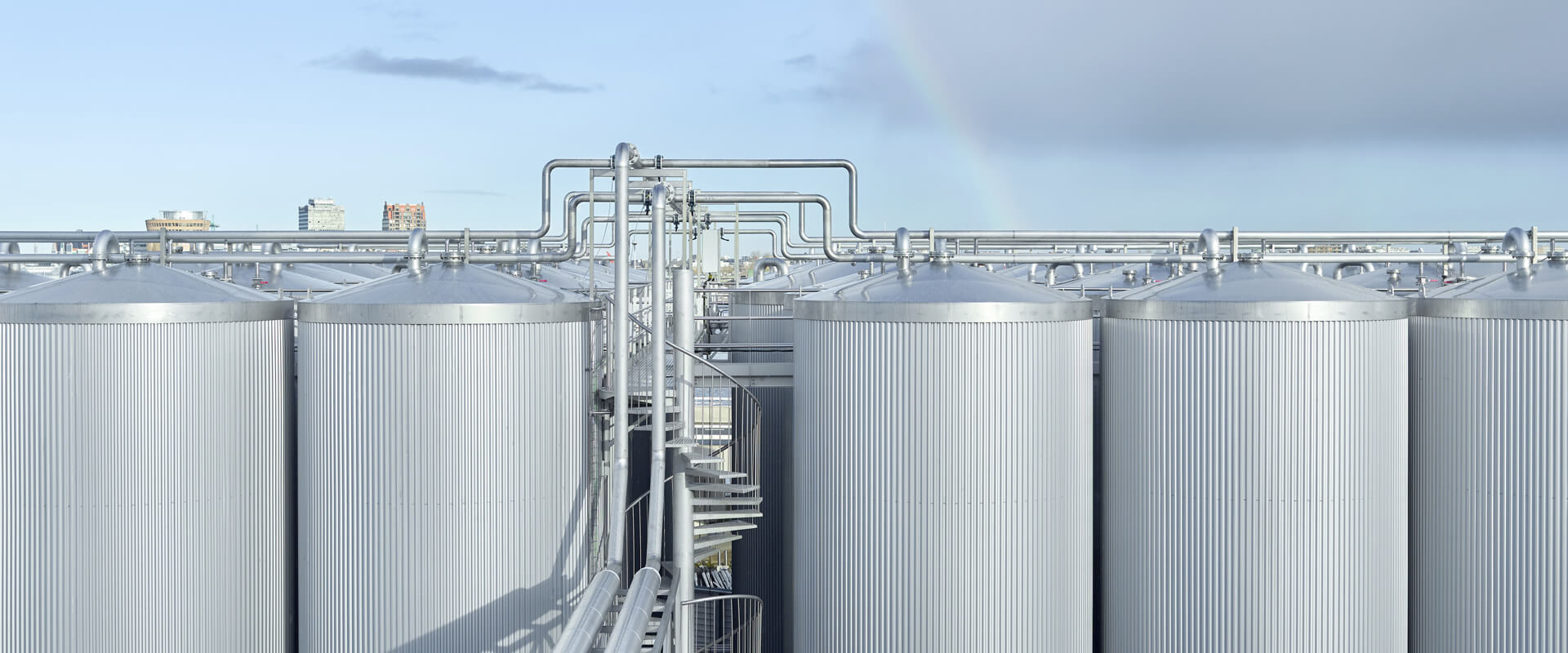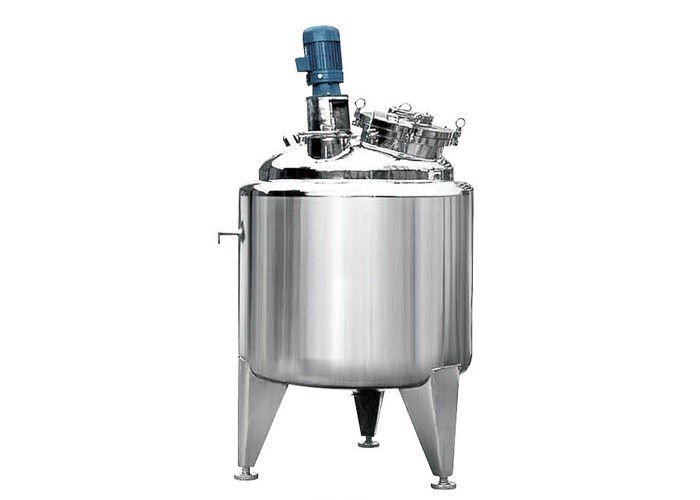Maximizing Safety and Resilience in Storage Tank Manufacturing: Ideal Practices Disclosed
In the domain of storage tank manufacturing, the vital to make best use of security and toughness has actually never ever been more noticable. Finest methods incorporating material selection, cutting-edge technologies, and strict quality control are necessary to minimize threats and enhance operational long life. Furthermore, the assimilation of routine assessments and worker training plays a crucial duty in promoting a safety-centric culture. As sector criteria develop, comprehending exactly how these elements adjoin can bring about substantial developments. What crucial approaches might become necessary in steering the intricacies of modern-day manufacturing?
Recognizing Product Option
The choice of suitable products is important to guaranteeing toughness, safety and security, and compliance with industry standards when it comes to storage tank manufacturing. The products selected must hold up against various ecological conditions, including temperature level changes, corrosive compounds, and physical stress factors. Usual products consist of carbon steel, stainless steel, and numerous types of polymers, each offering distinctive advantages and negative aspects relying on the application.
Carbon steel is preferred for its strength and cost-effectiveness, making it suitable for a large range of applications. Nonetheless, it is prone to corrosion, requiring protective coverings or cathodic defense systems. Stainless steel, while much more expensive, uses exceptional resistance to deterioration and is suitable for saving aggressive chemicals. Careful factor to consider of the details quality is important to ensure compatibility with the saved substances.
Along with rust resistance, aspects such as tensile toughness, thermal conductivity, and simplicity of fabrication have to be evaluated. Compliance with regulatory standards, such as those established by the American Oil Institute (API) or the American Society for Testing and Materials (ASTM), is likewise extremely important. Ultimately, a comprehensive understanding of material properties and their communications with stored contents is essential for the effective and risk-free operation of storage containers.
Applying Advanced Technologies
Applying advanced modern technologies in storage tank manufacturing can greatly boost functional effectiveness and security. Smart tracking systems enable real-time information collection, while automated manufacture methods enhance production procedures. In addition, predictive upkeep tools can assist expect equipment failures, lowering downtime and upkeep prices.
Smart Keeping Track Of Solutions
The combination of smart monitoring systems in storage tank manufacturing stands for a considerable improvement in operational effectiveness and safety. These systems leverage advanced modern technologies such as IoT (Web of Points) sensors, real-time information analytics, and cloud computing to provide continuous oversight of storage tank conditions - Fox Tank Company Permian Basin. By keeping track of variables such as temperature, liquid, and pressure degrees, suppliers can identify abnormalities early, minimizing the risk of ecological hazards and prospective failings
Carrying out clever monitoring systems allows for improved anticipating upkeep methods. Rather than sticking to a rigid maintenance timetable, drivers can use information analytics to establish the ideal times for interventions based on actual storage tank efficiency. This not just expands the life of the containers yet also reduces downtime and linked costs.
In addition, smart tracking systems improve compliance with regulatory criteria. Automated reporting functions can enhance the process of recording safety and security metrics and ecological impact, making sure that suppliers continue to be lined up with market regulations
Automated Fabrication Methods
Innovations in wise surveillance systems lay a solid structure for the fostering of automated construction techniques in storage tank manufacturing - Oil & Gas Storage Tank Fabrication. These techniques leverage cutting-edge technologies such as robotics, computer system numerical control (CNC) machining, and expert system to boost accuracy, effectiveness, and safety and security throughout the fabrication process
Robotic systems can carry out recurring jobs with exceptional precision, considerably lowering human error and improving general product top quality. CNC machines permit for elaborate layouts and specs to be executed constantly, guaranteeing that each storage tank fulfills rigid industry criteria. Moreover, the assimilation of expert system allows real-time data evaluation, maximizing the manufacturing process by determining bottlenecks and recommending improvements.
Furthermore, automated manufacture methods add to a more secure workplace by minimizing the need for hands-on labor in unsafe problems. This not only safeguards workers however likewise decreases liability for producers. The application of these technologies promotes a streamlined workflow, reducing production time and costs while boosting product sturdiness.
Predictive Upkeep Equipments
Predictive maintenance tools represent a substantial evolution in the operational performance of storage tank manufacturing. By leveraging advanced modern technologies such as Web of Points (IoT) sensing units, device knowing algorithms, and information analytics, makers can check the condition of storage space tanks in real-time. These tools enable the early detection of possible failings, enabling for timely interventions that prevent costly downtimes and boost security.
Carrying out predictive maintenance entails accumulating information on numerous signs, such as stress, vibration, and temperature levels. This data is then analyzed to recognize patterns and predict equipment failures prior to they take place. Maintenance can be scheduled at perfect times, decreasing unneeded expenses linked with reactive upkeep.
In addition, anticipating maintenance tools add to improved sturdiness by making certain that tools operates within its best parameters. This not only expands the life expectancy of storage space tanks yet likewise decreases the danger of devastating failures, which can result in financial losses and ecological hazards.
Guaranteeing Quality Assurance Standards
Quality assurance standards are fundamental in the storage tank manufacturing market, making certain that items meet safety and security, longevity, and regulatory demands (Permian Basin Oil & Water Tank Company). These requirements encompass a complete structure that governs every aspect of the manufacturing process, from basic material option to last item screening. Executing extensive high quality control procedures lowers risks associated with tank failings or leaks, which can have serious environmental and financial consequences
Key parts of quality control consist of specified requirements, standard operating procedures, and regular training for personnel. Automated systems can aid in monitoring production processes, permitting real-time information collection and evaluation. This not just enhances the precision of the results but additionally helps with swift corrective actions when inconsistencies take place.
In addition, involving third-party assessment agencies can supply an extra layer of assurance, ensuring conformity with sector policies and standards. Paperwork of all quality control activities is also essential, as it works as a referral for audits and constant improvement campaigns.
Eventually, adherence to stringent top quality control standards fosters trust fund among stakeholders, consisting of clients and governing bodies, while promoting a society of excellence within the company. The integration of these techniques is critical for accomplishing lasting success in the storage tank manufacturing field.
Conducting Routine Assessments
While the manufacturing process develops a structure for storage tank honesty, performing normal examinations is crucial for guaranteeing ongoing conformity with safety and security and performance requirements. These examinations offer to identify potential issues that may arise over time, such as corrosion, leakages, and architectural weaknesses. By applying a regular inspection timetable, producers can proactively attend to these worries prior to they escalate into more substantial troubles.
Routine examinations should include both detailed assessments and visual evaluations utilizing innovative innovations, such as ultrasonic screening or radiography. This multifaceted approach allows a complete assessment of the tank's problem and assists in verifying that all elements stay within governing compliance. Documentation of examination findings is vital, as it provides a historical record that can help in fad evaluation and future decision-making.
Additionally, engaging experienced experts for evaluations warranties that experienced eyes are inspecting the containers. Their know-how can result in the recognition of subtle defects that may go undetected by untrained employees. Eventually, normal evaluations are a crucial facet of storage tank upkeep, contributing significantly to the durability and dependability of the storage tanks, while guarding compliance with market requirements.
Focusing On Worker Safety And Security Measures

Applying detailed security training programs gears up staff members with the understanding to identify and minimize possible hazards. Routine drills and refresher training courses reinforce risk-free techniques, guaranteeing that employees continue to be vigilant. Individual protective equipment (PPE) should be easily available and purely enforced, including helmets, handwear covers, and respiratory system defense, tailored to the particular dangers of the manufacturing setting.
Furthermore, developing clear communication channels fosters a society of safety. Workers need to feel equipped to report hazardous problems without fear of retribution, promoting proactive danger monitoring. Safety audits and occurrence examinations are vital for recognizing weaknesses in present techniques, allowing for continuous enhancement.

Environmental Conformity Techniques
Incorporating robust ecological compliance strategies right into storage tank manufacturing is vital for decreasing the environmental impact of operations. These methods should incorporate adherence to environmental guidelines, efficient resource monitoring, and sustainable materials sourcing.
To start with, manufacturers need to remain abreast of local, nationwide, and international policies controling exhausts, waste management, and water usage - Storage Tank Manufacturing. By using conformity management systems, companies can ensure and track adherence to these regulations properly
Carrying out waste reduction strategies is critical. This includes recycling scrap materials, using closed-loop systems for water use, and lowering unsafe waste generation. Such practices not just adhere to environmental requirements however also improve operational performance and cost-effectiveness.
Additionally, fostering relationships with distributors who prioritize sustainability warranties that the materials made use of in storage tank production are eco-friendly. Using materials with lower ecological impacts, such as bio-based composites or recycled steels, can significantly improve the sustainability account of products.
Continuous Training and Growth
In the fast-evolving landscape of storage tank my link manufacturing, continual training and growth play an important duty in preserving high criteria of quality and safety and security. As innovation and regulations advance, it is critical that staff members are equipped with updated understanding and skills to browse new challenges successfully.
Applying a durable training program guarantees that workers are acquainted with the current market requirements, safety and security protocols, and innovative manufacturing strategies. This not just improves their specific proficiencies yet also promotes a culture of security and accountability within the company. Routine workshops, on-the-job training, and certification training courses can help workers remain informed regarding arising technologies and finest practices.

In addition, continual growth efforts can improve employee interaction and retention. When employees really feel valued and purchased their expert growth, they are most likely to add favorably to the organization's objectives.
Buying continual training and advancement ultimately leads to improved functional effectiveness, reduced error prices, and enhanced compliance with governing criteria. By prioritizing labor force education, storage tank makers can assure that they remain affordable while maintaining the highest degree of safety and resilience in their items.
Regularly Asked Questions
What Are the Expenses Related To Storage Tank Manufacturing?
The expenses connected with storage tank manufacturing encompass resources, labor, regulatory conformity, transport, and setup. Additionally, variables such as style intricacy, size, and environmental factors to consider can greatly influence overall manufacturing expenses.
How Do Climate Condition Influence Storage Tank Sturdiness?
Climate condition substantially impact storage tank durability, as severe temperature levels, moisture, and precipitation can lead to product degradation, rust, and architectural failure. Suitable materials and normal evaluations are necessary to alleviate these unfavorable effects.
What Types of Insurance Are Necessary for Storage Tank Manufacturers?

Just How Can I Pick a Trustworthy Storage Tank Distributor?
To pick a trusted storage tank distributor, review their sector experience, item high quality, accreditations, and consumer testimonials. Additionally, assess their responsiveness and support solutions to ensure they line up with your operational needs and safety criteria.
What Are the Regular Lead Times for Storage Tank Manufacturing?
Common lead times for storage tank manufacturing vary based upon intricacy, materials, and supplier capacity, usually ranging from a few weeks to numerous months. Aspects such as design requirements and regulative requirements can likewise affect timelines considerably.
When it comes to storage space tank manufacturing, the selection of ideal materials is critical to assuring toughness, security, and conformity with market criteria. Carrying out advanced modern technologies in storage tank manufacturing can greatly improve functional efficiency and safety. Quality control criteria are fundamental in the storage container manufacturing industry, making certain that products satisfy safety, resilience, and governing needs. While the manufacturing process develops a structure for storage tank honesty, conducting normal inspections is crucial for ensuring recurring compliance with security and efficiency standards. In the fast-evolving landscape of storage tank manufacturing, continual training and growth play a vital role in keeping high standards of top quality and safety.